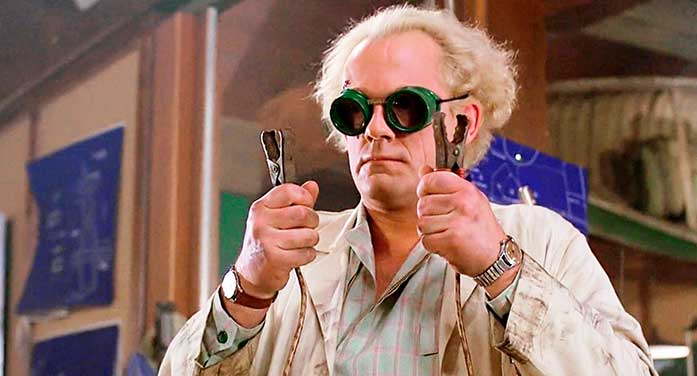
(From left) Frank Hegmann, U of A physics professor; Doug Schweitzer, minister of jobs, economy and innovation; Bill Flanagan, U of A president; Aminah Robinson Fayek, VP of research and innovation; and Elan MacDonald, VP of external relations, were on hand for the announcement today of nearly $27 million in research infrastructure funding from the Government of Alberta supporting 11 U of A projects. (Photo: Nicole Roy)
An investment of $27 million from the Alberta government will significantly boost research capacity and lead to innovations across the sciences at the University of Alberta.
The provincial government announced recently that a four-year investment through its Research Capacity Program will be used to upgrade or create new facilities and infrastructure for 11 research projects. The projects will accelerate discoveries in health, energy, environmental sciences, agriculture and astrophysics.
“For more than a century, the University of Alberta has created innovations that have helped build social, cultural and economic prosperity in Alberta and beyond,” said Bill Flanagan, president and vice-chancellor.
“These discoveries would not be possible without support from the province.”
Flanagan was on hand for Thursday’s announcement, along with Doug Schweitzer, minister of jobs, economy and innovation; and Aminah Robinson Fayek, vice-president of research and innovation.
“Bringing U of A innovations to the world requires not only the best minds, but the right facilities and tools,” said Robinson Fayek, who was appointed in July. “The funding announced today will help build the infrastructure that researchers need to find solutions for tomorrow.”
The province’s investment includes $3.6 million towards equipment that will allow researchers at the U of A, along with partners at the University of Manitoba, to view and better understand materials at the atomic scale. The signature piece of equipment will be a scanning tunnelling microscope (STM), a Nobel Prize-winning invention that reveals minute details of an object not through direct imagery but by measuring electric current between the object and a special stylus.
“This investment will put our university at the forefront of understanding how materials work at the atomic scale,” said Frank Hegmann, professor in the Department of Physics and lead for the “Ultrafast Nanoscale Quantum Dynamics (UltraNanoQD)” research project.
Hegmann’s lab has already invented a technique to “slow down” STM images of ultrafast phenomena, which happen in less than a trillionth of a second, so they can be observed and studied. The new equipment will give the team even greater insight into the atomic world – and how to manipulate materials to develop new technologies.
“This will open doors to create new innovations in areas like telecommunications, solar power and new energy sources,” Hegmann said.
The provincial funding will allow U of A researchers to further our understanding of disease, while better protecting natural environments and agricultural operations from climate change. Grants will also lead to advances in the study of space – from radiation to distant galaxies to the mysterious celestial substance called “dark matter.”
Schweitzer said the new funding will not only strengthen Alberta as a leader in research and technology development, but will also help attract new talent, investments and jobs to the province.
“We want Alberta to be a dominant player in the global innovation arena,” said Schweitzer. “That’s why we’re investing in research at the University of Alberta – paving the way for our technology and innovation highway to create cutting-edge technologies and solutions that will create jobs and secure our economic future for our children and grandchildren.”
Robinson Fayek said the new facilities and tools will help ensure the U of A remains one of the world’s top research universities.
“We want to be leaders in solving complex challenges through our research, innovation and creativity,” said Robinson Fayek. “By working together, we will generate the opportunities and innovations that will carry this province forward.”
Provincial funding from the Research Capacity Program matches dollars from the federal government’s Canada Foundation for Innovation. The Government of Alberta’s RCP investments will support 11 U of A research projects:
- $6.1 million for equipment to assess the effects of space radiation on Earth’s climate (Ian Mann, Science)
- $5 million to upgrade equipment to better define the chemical characteristics of new materials (Dennis Hall, Science)
- $3.9 million to upgrade infrastructure to study protein folding to help develop new treatments for diseases including Alzheimer’s and Parkinson’s (David Westaway, Medicine & Dentistry)
- $3.6 million to purchase a scanning tunnelling microscope to study the atomic structure of materials (Frank Hegmann, Science)
- $3 million for equipment to study dark matter, paving the way for advanced technologies of the future (Aksel Hallin, Science)
- $2.5 million to upgrade equipment at The Metabolomics Innovation Centre used to study how exposure to environmental toxins affects our health (Liang Li & Matthew Hicks, Medicine & Dentistry)
- $1 million to support the study of sustainable animal agriculture and environmental stewardship (Graham Plastow, Agricultural, Life & Environmental Sciences)
- $750,000 to purchase a new telescope that will further research into the formation of distant galaxies in the early stages of the universe (Erik Rosolowsky, Science)
- $500,000 to build infrastructure to better protect water sources (David Olefeldt, Agricultural, Life & Environmental Sciences)
- $300,000 to support the study of health impacts of medications taken during pregnancy (Padma Kaul, Medicine & Dentistry)
- $200,000 for new technology to better predict and remediate environmental contamination (Nicholas Beier, Engineering)
| By Niall McKenna
Submitted by the University of Alberta’s Folio online magazine. The University of Alberta is a Troy Media Editorial Content Provider Partner.
© Troy Media
Troy Media is an editorial content provider to media outlets and its own hosted community news outlets across Canada.


